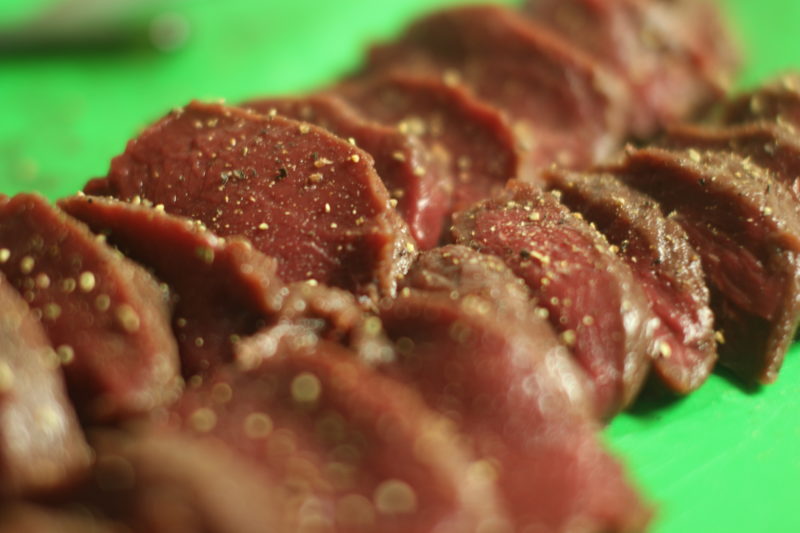The saying “Don’t put all your eggs in one basket” transfers to the hunting world as “Don’t put all your venison in one freezer.” It’s a good rule to live by because if your freezer goes out or you lose power for a few days, you might lose a year’s worth of hard-earned meat. Diversifying your storage methods is a good way to protect your investment.
Your ancestors likely salted, brined, dried, smoked, pickled or fermented their harvest for long-term storage. While some hunters still honor and practice those traditions today, canning is a more modern and effective preservation strategy.
We spoke with Julie Garden-Robinson, a professor and the food and nutrition specialist at North Dakota State University Extension in Fargo, to get the rundown on why and how to can venison. She’s canned meat numerous times and develops and maintains the extension office’s food preservation resources, many of which are free at http://www.ag.ndsu.edu/food under the “Food Preservation and Wild Game” tab.
So, what are the benefits of canning venison? According to Garden-Robinson, canned venison:
“On the other hand, you need specialized canning equipment and supplies, including an up-to-date pressure canner, jars and lids,” Garden-Robinson said.
Depending on where you live and which brand and model you get, stovetop pressure canners can cost about $100 to $200. Electric pressure canners are acceptable, but water bath canning is not recommended for processing venison because only pressure canners can reach high enough temperatures to kill dangerous bacteria. Multifunctional pressure cookers, like the Instant Pot, are not safe to use for canning either.
You’ll also need tongs, a jar lifter, a rack and other small supplies, which are available in reasonably priced kits. Jars, lids and rings are also required but can be purchased in a case to save money. While all these items may cost you upfront, so does a freezer. Fortunately, everything (minus the lids, which must be new to ensure a good seal) can be reused over and over, unlike freezer and vacuum-sealed bags.
“Some people are a little afraid of pressure canning, but if directions are followed, it’s a safe process that has many rewards in healthy meals,” Garden-Robinson said. She encourages new canners to read instruction manuals, get familiar with their equipment and follow directions carefully to produce safe, sealed canned goods.
– Using the Hot Pack or Cold Pack Method
Venison can be packed either raw or cooked (cold pack or hot pack). The hot pack method is preferred because it improves the vacuum during pressure canning and may lengthen the shelf life. The heating process also allows canners to fit more meat into their jars and helps prevent the food from floating. Raw-packing venison is faster, but the raw food has trapped air, so it may float and darken during storage. It’s also not as easy to use right off the shelf because it must be cooked first. Overall, the hot pack method provides a higher-quality product and is easier to use on the back end.

If you’re hoping to turn your venison into a stew, can your meat in cubed chunks. Photo Credit: Outdoor Life
– Canning Ground or Cubed Meat
Canners can use ground or cubed meat in either packing method. Garden-Robinson said canners must think about their end recipe to determine which type of processed meat they want to can. For example, for making chili you might want ground venison, but for stew you might want it cubed. “The best approach may be to can different forms of meat,” she said.
The NDSU Extension office outlines these methods and options, and shares recommended canning times based on different elevations and types of meat, in its free publication “Home Canning Meat: Poultry, Red Meats, Game and Seafood.”
Whether it was canned cooked, raw, ground or cubed, canned venison is easy to grab off the shelf and immediately use before mealtime.
Garden-Robinson cautions canners to check the legitimacy of the information they find online. “Some online resources recommend processes that we know are not safe according to food safety experts,” she said. Only follow the instructions from reliable sources like the National Center for Home Food Preservation or extension outreach programs.
“We saw a lot of canning failures when off-brand lids were used during the pandemic,” Garden-Robinson said. “On average, name-brand lids might cost about 40 cents each, or less if purchased in quantity.”
With the right tools and mindset, you can diversify your venison storage options and ensure quality meat is available when you need it.